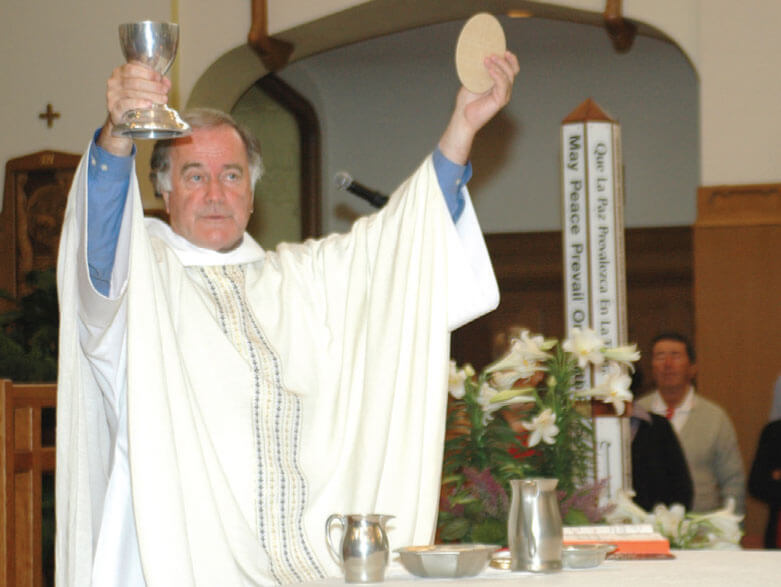The Second Vatican Council made liturgy, the Church’s public worship, its first topic to discuss. Liturgy includes Eucharist and the other sacraments, the liturgical year and its plans for scripture readings, daily prayers of the hours, sacred art, and music.
The Eucharist is the summit and source of Catholic worship. When we gather to celebrate Jesus’ gift of himself in his death and resurrection, we Christians see ourselves as a community, as the Body of Christ in the world. Eucharist is the summit of our activity and shows us who we are.
Eucharist also builds up the Christian community. We receive the Body of Christ to become the Body of Christ. We do as James and John pledge to do — drink the cup Jesus’ drinks.
Sunday’s gospel helps us understand what the cup of wine we share at Eucharist means. At his last supper with his friends, Jesus pledges his love and service, even unto death. The cup of wine becomes a promise he will pour out his lifeblood for all, a promise Jesus keeps the next day.
Moses and the people swear in blood their covenant to live the ten commandments (Exodus 24). They promise with their lives. Jesus makes a new covenant in his lifeblood. In the blood and water that flow from Jesus’ side on the cross we see his love poured out for us. Every time at Eucharist we drink the cup that is the Blood of Christ, we pledge to pour out ourselves in service as Jesus did.
The Second Vatican Council made many changes to foster full, active, conscious participation in worship. The reforms turned the altar to face the people. Priest and people faced each other and gathered around the altar table as they prayed together. We began to pray and read in the languages people spoke rather than Latin, which had become a dead language.
Lay people became lectors who read the first two scripture passages at Mass. Others became Eucharistic ministers. The council restored Prayers of the Faithful as part of Eucharist as they had been earlier in the Church. Catholics exchanged a sign of peace.
The Council called for a new plan for reading the bible at worship. Before Vatican II the liturgical year had one cycle of scripture readings. Catholics heard the same gospels each year, mainly from Matthew’s gospel. Vatican II called for a three-year cycle of scripture readings that included all four gospels and more Old Testament readings. One of the ways Vatican II urged Catholics to participate more fully in Eucharist is to study scripture.
The Second Vatican Council reminds us that Jesus Christ is always with us — in the person of the priest, in the Eucharistic species, in the sacraments. It is Christ who speaks in the gospels. He is present when the Church prays and sings, whenever two or three gather in his name (Sacred Liturgy, #7)
- Find in Mark 14.24 what the cup of wine signifies at Jesus’ last supper. To what does drinking from this cup commit James and John?
- Find in Mark 14.32-42 what the cup represents to Jesus.
- Find in Mark 14.50 what James and John do when Jesus is arrested.
- Find in Acts 12.1-2 how James keeps his commitment.
- Find in Acts 3, 4, and 8.14-25 how John continues Jesus’ work.
- Find in Revelations 1.9 John’s last action recorded in the New Testament.


